
In all the given cases block are in contact and the forces are applied as shown. All the surfaces are smooth. Then in whhich of the following cases, normal reaction between the two blocks is zero.
(i),(iv)
(ii),(iii)
(iii)
(v)
The correct Answer is:D
(i) 
a=0
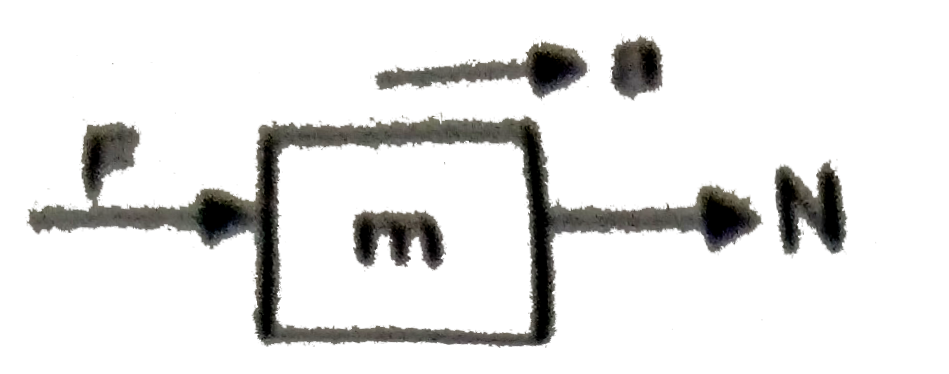
(ii) 
a=2F4m=F2m
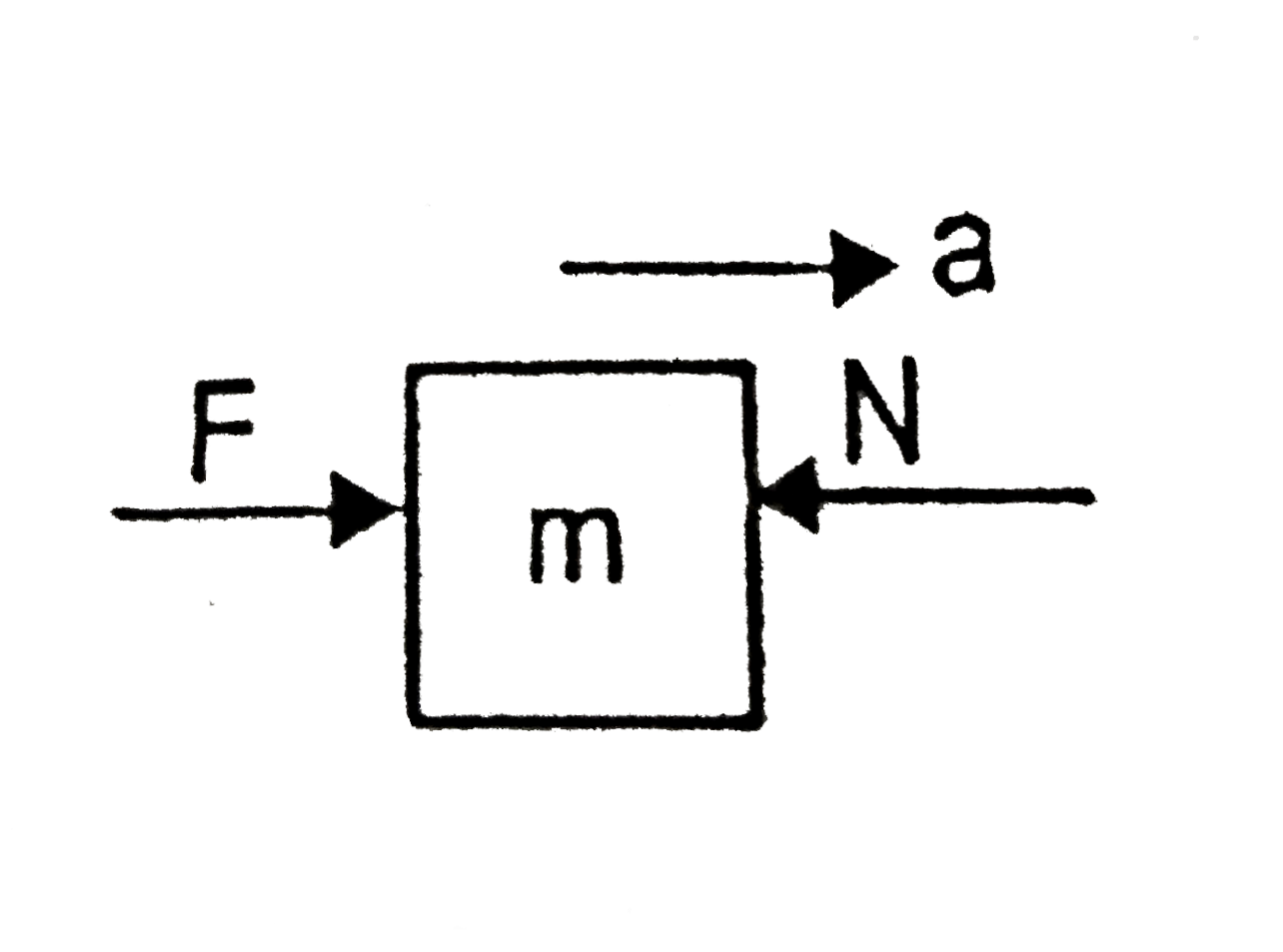
F−N=ma
N=F−m(F2m)=F2
(iii)
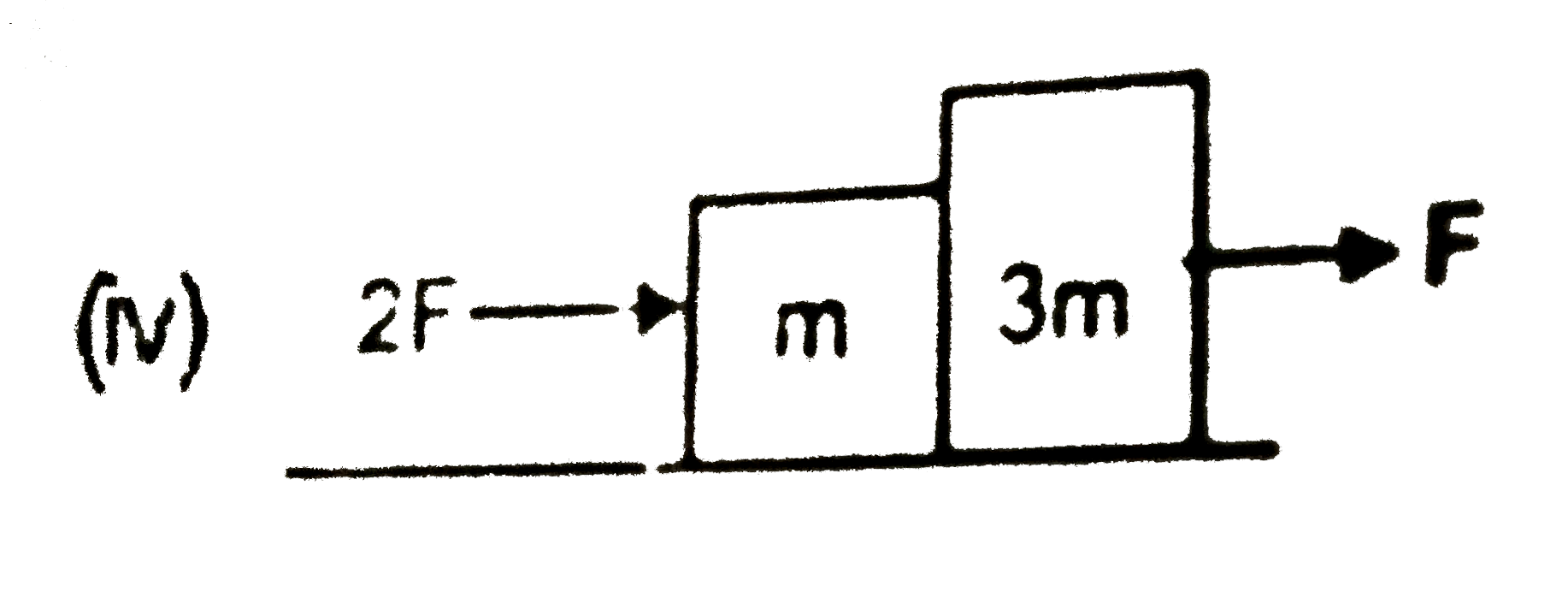
a=3F4m

F−N=ma
N=F−ma
N=F−m(3F4m)
N=F4.
(iv) 
a=3F4m

2F−N=ma,N=2F−m(3F4m)
N=5F4
(v) 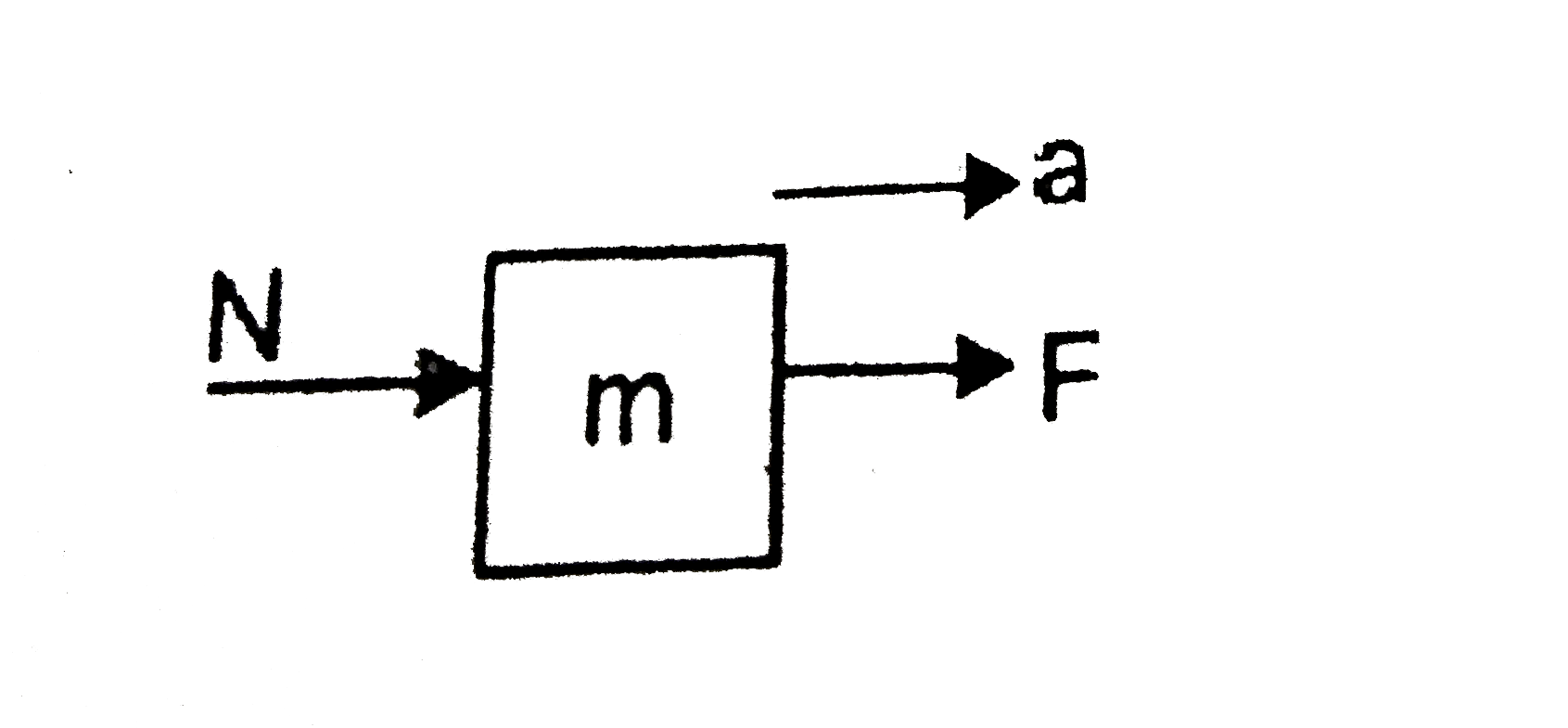
a=3F3m=Fm

N+F=ma,N+F=m(Fm)
N=0
Topper's Solved these Questions
- DAILY PRACTICE PROBLEMSBook:RESONANCE ENGLISHChapter:DAILY PRACTICE PROBLEMSExercise:dpp 22.
Explore 8 Videos
- DAILY PRACTICE PROBLEMSBook:RESONANCE ENGLISHChapter:DAILY PRACTICE PROBLEMSExercise:dpp23
Explore 8 Videos
- DAILY PRACTICE PROBLEMSBook:RESONANCE ENGLISHChapter:DAILY PRACTICE PROBLEMSExercise:dpp 20
Explore 8 Videos
- CURRENT ELECTRICITYBook:RESONANCE ENGLISHChapter:CURRENT ELECTRICITYExercise:Exercise
Explore 53 Videos
- ELASTICITY AND VISCOCITYBook:RESONANCE ENGLISHChapter:ELASTICITY AND VISCOCITYExercise:Advanced Level Problems
Explore 9 Videos
Similar Questions
Force 'F' is applied on block 'B' and the system remains at rest . All surface are ruogh , which of the following statement (s) is /are correct
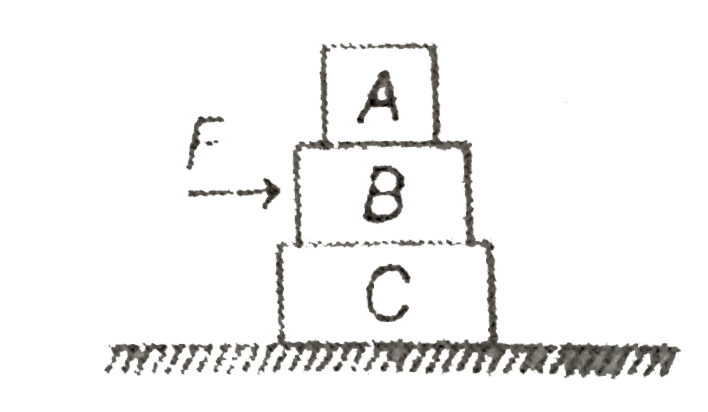
View SolutionTwo blocks A and B of masses 10 kg and 5 kg respectively are placed inside a cart which is moving horizontally with an acceleration of2ms2 as shown in the figure. If all the surfaces are smooth then the ratio of normal reaction between the block A and vertical surface of the cart and normal reaction between the blocks A and B is
View Solution
Knowledge Check
Figure shows four situations in which a force is applied to a block. In all four cases, the force has the same magnitude, and the displacement of the block is to the right and of the same magnitude. Which of the following cases work done by the applied force on the block zero?
 A(i)B(ii)C(iii)D(iv)
A(i)B(ii)C(iii)D(iv)
Two blocks A and B each of mass m are placed on a smooth horizontal surface. Two horizontal force F and 2F are applied on blocks A and B, respectively, as shown in fig. Block A does not slide on block B. Then then the normal reaction acting between the two blocks is (assume no friction between the blocks)
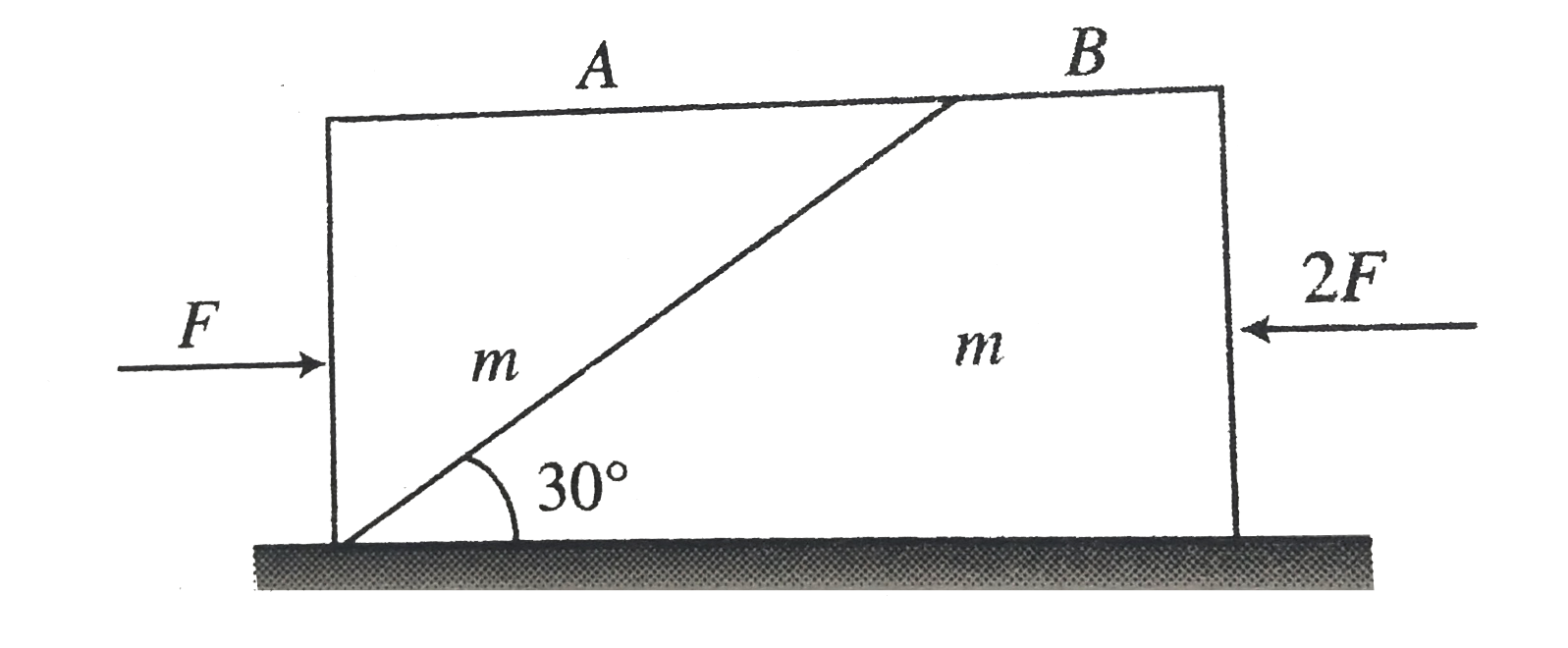
View SolutionTwo blocks A and B each of mass m are placed on a smooth horizontal surface. Two horizontal force F and 2F are applied on blocks A and B, respectively, as shown in fig. Block A does not slide on block B. Then then the normal reaction acting between the two blocks is (assume no friction between the blocks)

View SolutionTwo blocks A and B each of mass m are placed on a smooth horizontal surface. Two horizontal force F and 2F are applied on blocks A and B, respectively, as shown in fig. Block A does not slide on block B. Then then the normal reaction acting between the two blocks is (assume no friction between the blocks)

View SolutionTwo blocks A and B each of mass m are placed on a smooth horizontal surface. Two horizontal force F and 2F are applied on blocks A and B, respectively, as shown in fig. Block A does not slide on block B. Then then the normal reaction acting between the two blocks is (assume no friction between the blocks)

View SolutionTwo block of masses m1andm2 are placed side by side on a smooth horizontal surface as shown in fig. A horizontal force F is applied on the block .
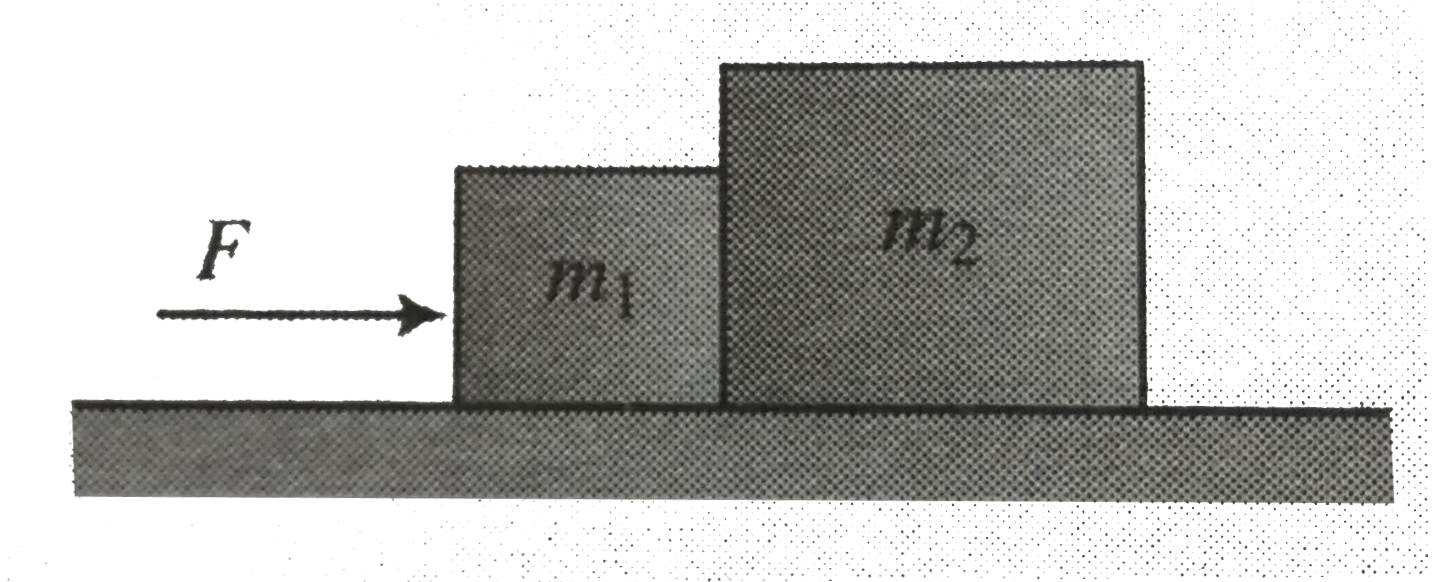
(a) Find the acceleration of each block.
(b) Find the normal reaction between the two blocks.
View SolutionTwo blocks of masses '3m' and '2m' are in contact on a smooth table. A force P is first applied horizontally on block of mass '3 m' and then on mass '2m'. The contact forces between the two blocks in the two cases are in the ratio:

View Solution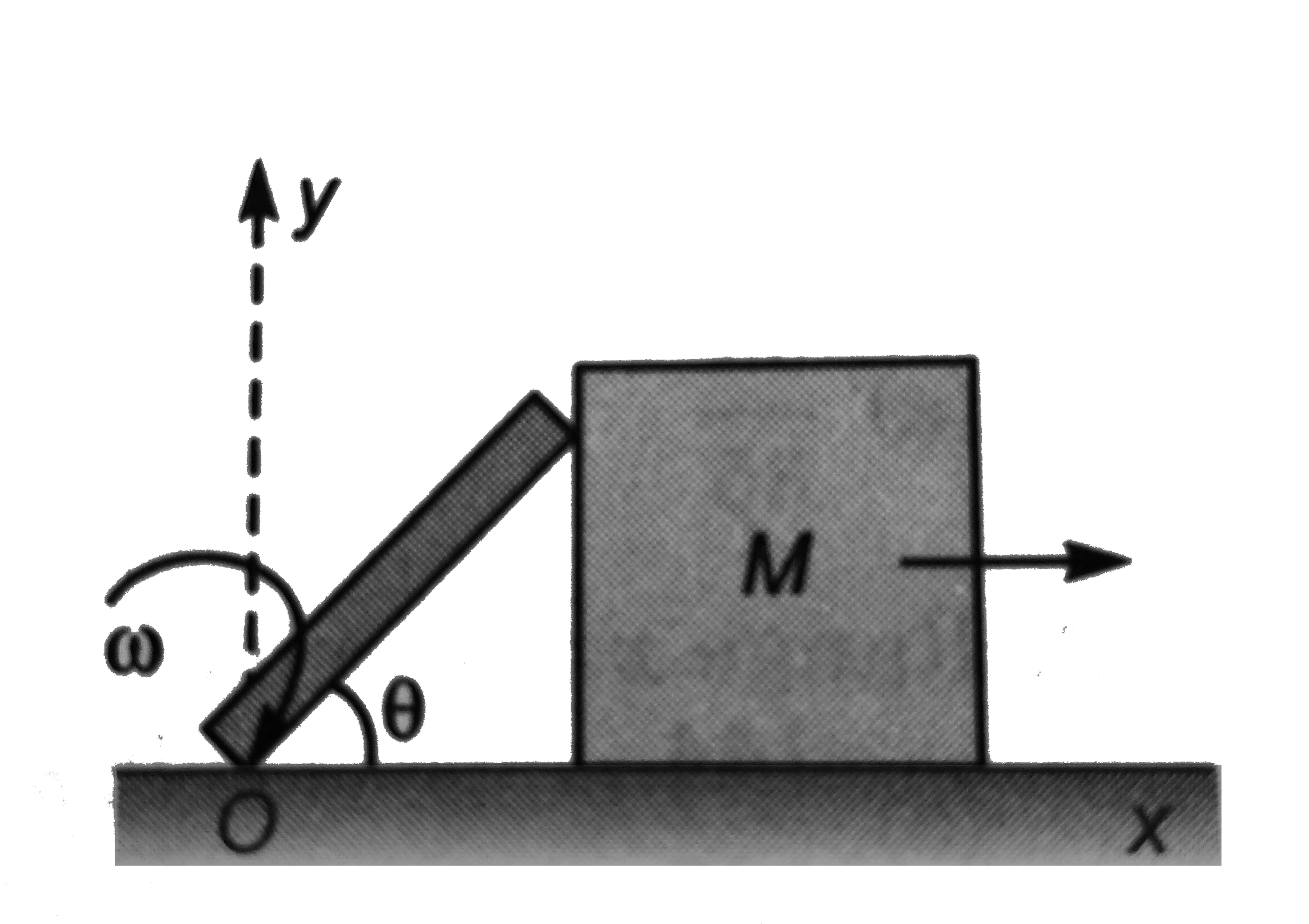
A uniform rod of mass m and length l is applied pivoted at point O. The rod is initially in vertical position and touching a block of mass M which is at rest on a horizontal surface. The rod is given a slight jerk and it starts rotating about point O this causes the block to move forward as shown The rod loses contact with the block at θ=30∘ all surfaces are smooth now answer the following questions.
Q. The velocity of block when the rod loses contact with the block is
View Solution